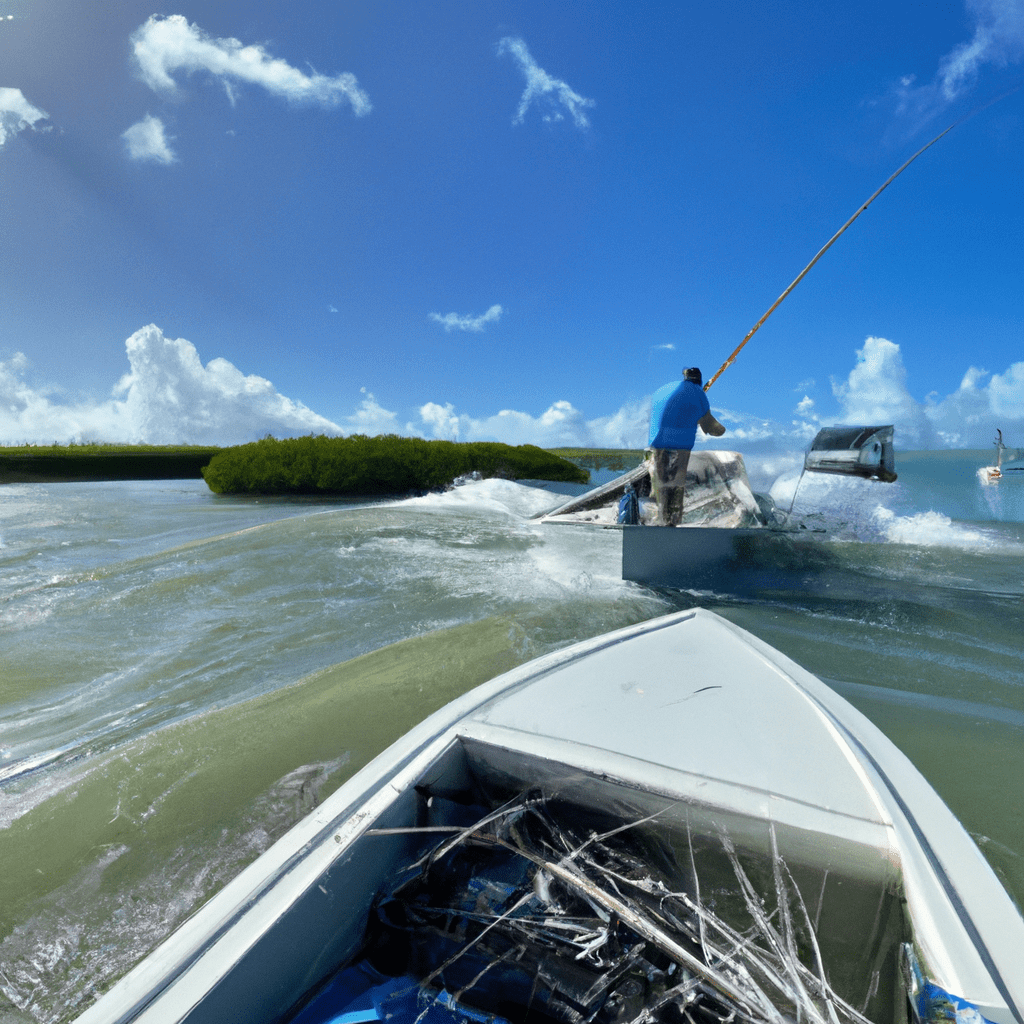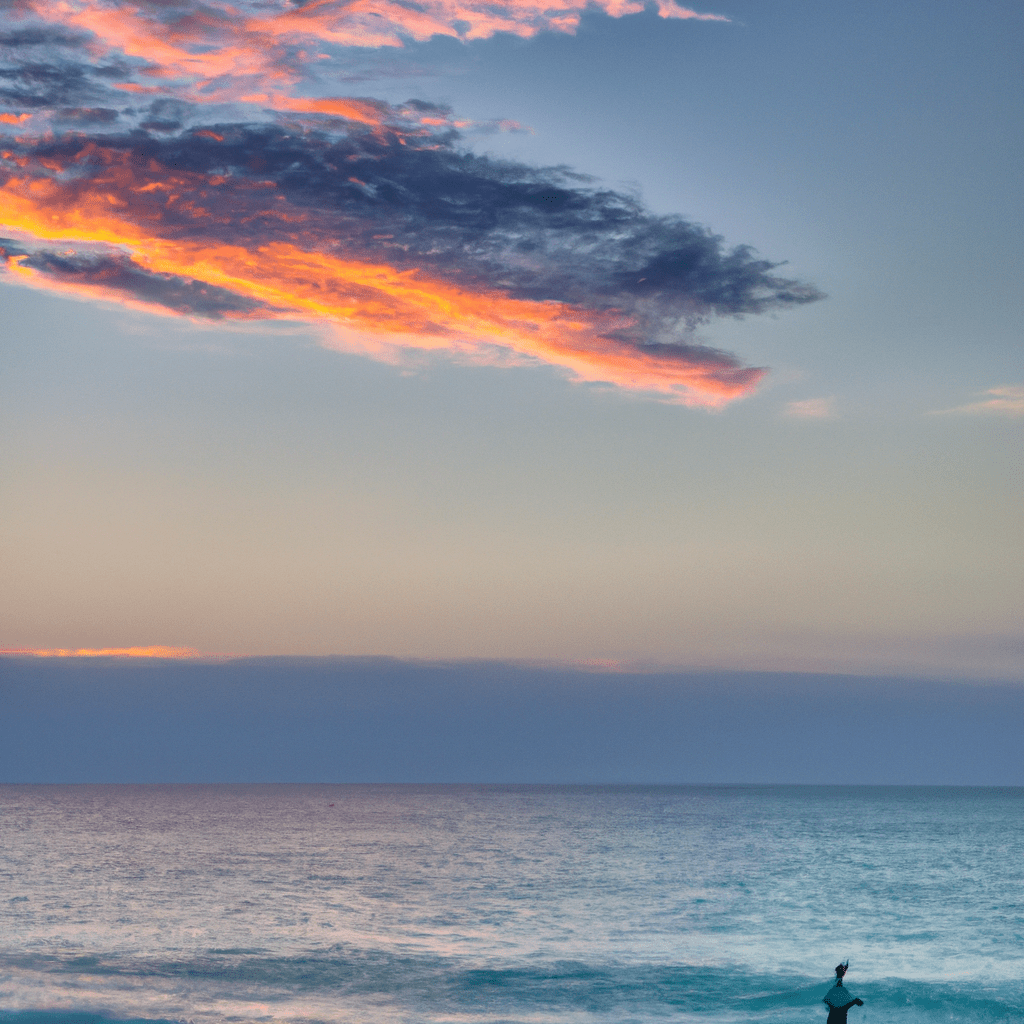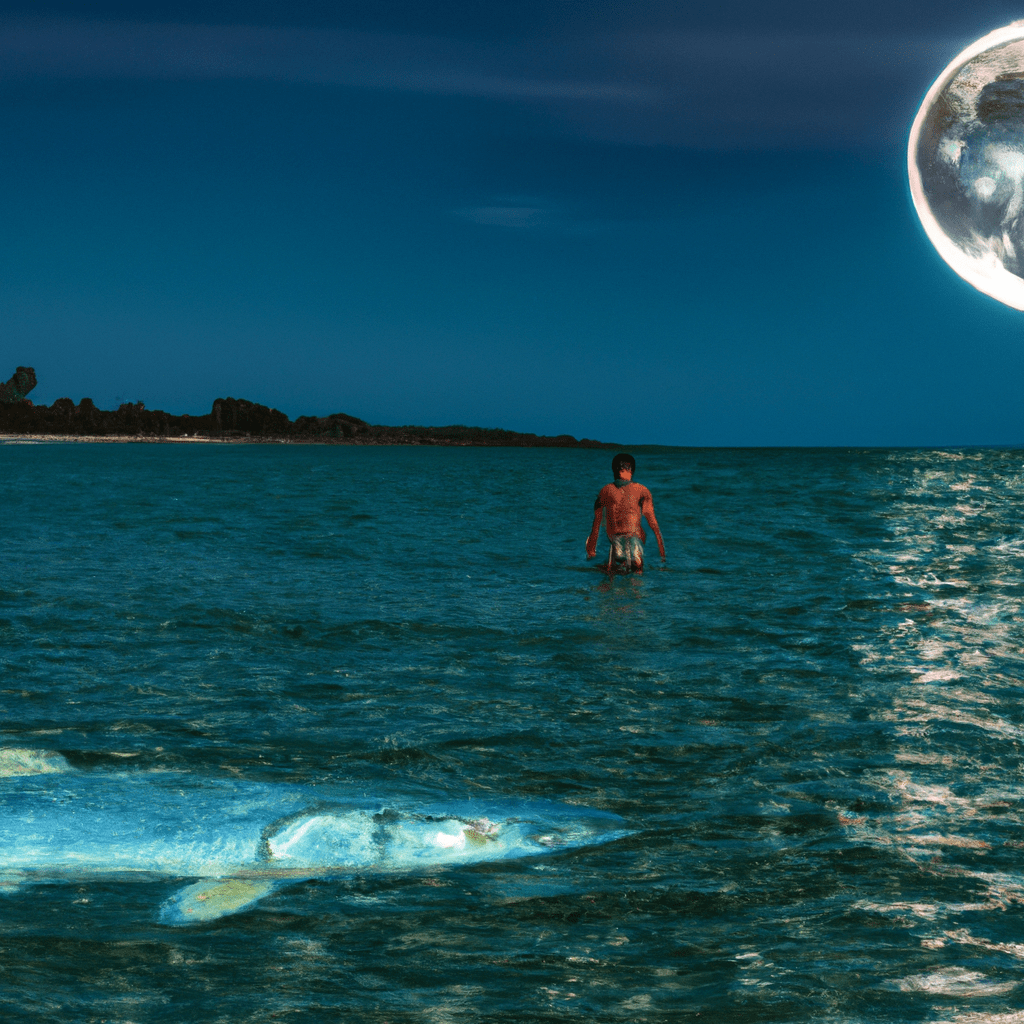Did you know that tarpon fishing success is greatly influenced by tidal patterns? Understanding the correlation between tides and tarpon behavior is essential to increase your chances of reeling in these mighty fish.
With rising tides, tarpon become more active and easier to locate, while falling tides pose unique challenges. By capitalizing on the right tidal movements, you can optimize your fishing techniques and increase your chances of a successful catch.
In this article, we will delve into the fascinating world of tarpon fishing and the profound influence of tides.
Understanding the Tidal Cycle

You’ll have better success in tarpon fishing by understanding the tidal cycle. To maximize your chances of catching tarpon, it’s crucial to have a deep understanding of tidal currents and the ability to predict tidal movements.
Tidal currents are the horizontal flow of water caused by the gravitational pull of the moon and the sun. These currents play a significant role in the movement and behavior of tarpon. By understanding the ebb and flow of tides, you can strategically position yourself in areas where tarpon are more likely to be present.
Additionally, predicting tidal movements allows you to plan your fishing trips accordingly, ensuring you’re on the water during peak feeding times. Therefore, mastering the understanding of tidal cycles is paramount for successful tarpon fishing.
The Effects of Rising Tides on Tarpon Behavior

To understand how rising tides influence tarpon behavior, it’s important to examine their response to changing water levels and the impact it has on their feeding patterns. Tarpon, known for their remarkable migration patterns, are highly influenced by the movement of tides.
As the water level rises, tarpon become more active and responsive, enhancing their feeding opportunities. This is particularly evident during times of tarpon migration, where rising tides provide an advantageous environment for these fish to navigate through shallow waters.
Furthermore, the impact of moon phases can’t be ignored when studying tarpon behavior. During full and new moon phases, when tides are at their highest, tarpon exhibit increased feeding activity.
This correlation between rising tides, tarpon migration, and moon phases showcases the intricate relationship between these factors and tarpon behavior.
Navigating the Challenges of Falling Tides

Successfully navigating the challenges of falling tides can be tricky, but with the right strategies and knowledge, you can still have a productive tarpon fishing experience. When fishing during falling tides, it’s important to consider the tackle selection and adjust your bait and lure presentation accordingly.
Tackle Selection for Fishing During Falling Tides
During falling tides, the water level decreases, making it essential to use lighter tackle. Opt for a lighter rod and reel combo to ensure better control over your line and to prevent it from getting tangled in the debris that may be exposed during low tide. Additionally, using a lighter line with a higher pound test can help you cast farther and prevent breakage.
Adjusting Bait and Lure Presentation During Falling Tides
As the water level drops, tarpon tend to move to deeper channels and pockets. To increase your chances of a successful catch, adjust your bait and lure presentation accordingly. Using live bait, such as mullet or shrimp, can be effective during falling tides as tarpon seek out easy meals. Additionally, consider using lures that mimic injured baitfish to entice tarpon to strike.
Best Times to Fish for Tarpon Based on Tidal Patterns

When planning your tarpon fishing trips, it’s important to consider the best times to fish based on tidal patterns. Tides play a crucial role in tarpon feeding behavior, and understanding these patterns can greatly increase your chances of a successful catch. Here are some key factors to consider:
- Optimal bait selection for tarpon during different tidal phases:
- During incoming tides, tarpon are more likely to feed near the surface, making topwater lures and live bait such as mullet or pinfish effective choices.
- As the tide starts to turn, tarpon tend to move to deeper waters. Using deep-diving lures or bottom-dwelling bait like crabs and shrimp can yield better results.
- During outgoing tides, tarpon often gather around structure, making jigs and artificial lures that mimic small fish or crustaceans excellent options.
How lunar cycles affect tarpon feeding patterns:
- Tarpon feeding activity tends to peak during full and new moon phases, when tidal movements are more pronounced.
- During quarter moon phases, when tidal movements are less extreme, tarpon feeding activity may be less predictable.
Techniques for Capitalizing on Tidal Movements

How can you take advantage of tidal movements to improve your tarpon fishing techniques?
When it comes to tarpon fishing, understanding and leveraging tidal currents can significantly increase your chances of success.
One effective strategy is to fish during the incoming tide. As the tide rises, it brings in a fresh supply of baitfish, attracting hungry tarpon looking for an easy meal.
Position yourself near channels, passes, or other areas where tarpon are known to gather during the incoming tide.
Additionally, pay attention to the timing of high and low tides. High tides often provide better opportunities for tarpon fishing, as they allow for easier navigation in shallow waters.
Frequently Asked Questions
What Are the Best Fishing Spots for Tarpon During Different Stages of the Tidal Cycle?
During different stages of the tidal cycle, you can find the best tarpon fishing spots by considering factors like depth, structure, and current flow. Additionally, utilizing tarpon fishing techniques during slack tides can be effective.
How Do Different Weather Conditions, Such as Wind and Rain, Affect Tarpon Fishing During Different Tidal Phases?
Different weather conditions, like wind and rain, can have varying effects on tarpon fishing during different tidal phases. Consider how temperature affects tarpon activity and how barometric pressure impacts their feeding behavior.
Are There Any Specific Lures or Bait That Are More Effective During Certain Stages of the Tidal Cycle?
During different stages of the tidal cycle, specific lures or bait can be more effective for tarpon fishing. Understanding the influence of tides on tarpon behavior and their preferred fishing spots is crucial for maximizing your catch.
How Does the Moon Phase Impact Tarpon Behavior and Feeding Patterns?
During the moon phase, tarpon behavior and feeding patterns are influenced. The moon’s gravitational pull affects tarpon migration and their spawning behavior. Understanding these impacts is crucial for successful tarpon fishing.
Are There Any Specific Techniques or Strategies for Fishing Tarpon During Slack Tides or When the Water Is Not Moving?
During slack tides or when the water is still, you can employ specific techniques and strategies for fishing tarpon. These include using live baits, employing stealthy approaches, and targeting areas with structure or cover.

